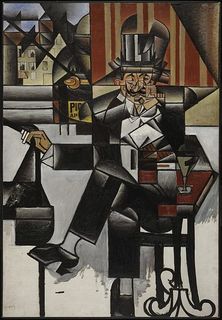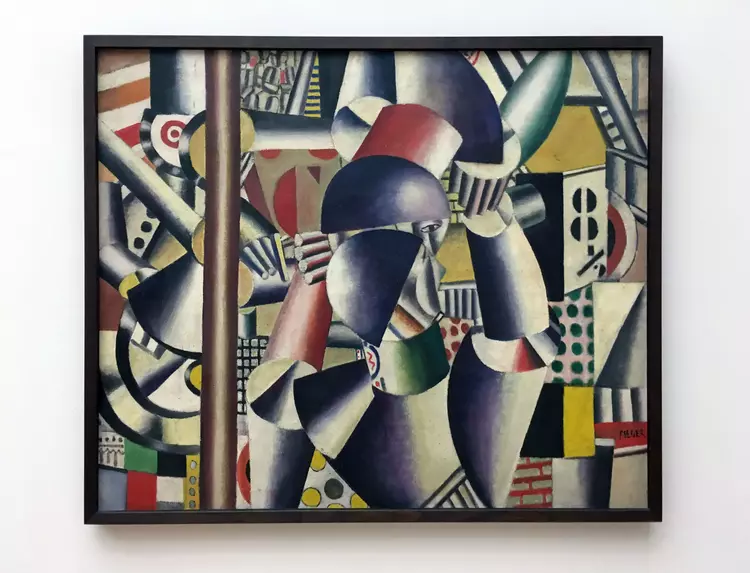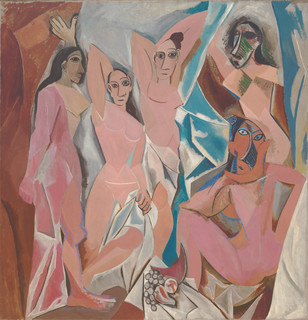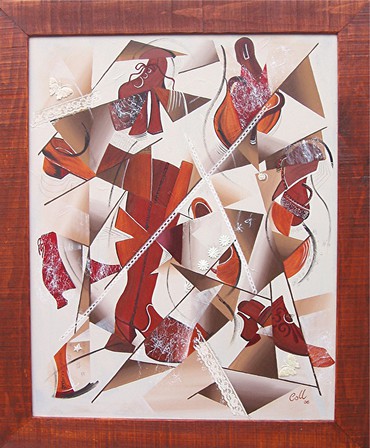Unlocking the Secrets of Cubism: Where Reality Meets Abstraction
Cubism, a revolutionary movement in art, emerged as a prominent French school of thought between 1907 and 1914. Spearheaded by the pioneering artists Pablo Picasso and Georges Braque, Cubism shattered traditional artistic norms by embracing a multi-dimensional approach to representation. The groundbreaking piece "Les Demoiselles d'Avignon" by Picasso in 1907 and Braque's "Le Viaduct de L'Estaque" showcased the inception of this revolutionary movement.
Main Image is a large mixed media artwork by Collette
In essence, Cubism sought to challenge the conventional single-point perspective prevalent since the Renaissance era. Instead of limiting artworks to a single viewpoint, Cubism presented subjects from multiple perspectives simultaneously, providing viewers with a rich and multifaceted understanding of the subject matter. This artistic departure marked a seismic shift in how the world was perceived and represented.
Contrary to popular belief, Cubism was not a complete departure from reality. Instead, it aimed to present a more comprehensive and multifaceted reality, as if one were walking around an object, observing it from various angles. The subject matter in Cubism took a backseat to the innovative approach used to represent it.
Early Cubist works focused on representing objects, figures, and landscapes, breaking them down into abstract forms. Instead of adhering to a single viewpoint, artists depicted the subject from multiple angles, providing a greater context for the overall composition.
Cubist artworks were not simply a fragmentation of pictures into squares; the surfaces intersected at seemingly random angles, defying a coherent sense of depth. The interpenetration of background and object planes created a shallow and ambiguous space, a hallmark characteristic of Cubism. Over time, the movement evolved into more cryptic and enigmatic works, where the overall pattern took precedence over recognizable forms. While early Cubist works primarily employed dull and subdued colours, later artists such as Juan Gris and Fernand Léger introduced more vibrant and brilliant colour schemes into their compositions.
Early Cubist works were painted mostly in drab dull colours which I guess were the favoured colour schemes of that era; later on Cubists such as Juan Gris's "Man in a Cafe"

and Fernand Léger "The City" used more brilliant colours.

For many, including myself, the initial encounter with Picasso's Cubist works seemed like a chaotic jumble. However, upon closer examination, the intricate interplay of shapes and perspectives revealed a harmonious cohesiveness. This epiphany has continued to resonate, fostering a lasting appreciation for Cubism's unique aesthetic and intellectual depth.
The term "Cubism" itself was created by art critic Louis Vauxelles, who referred to Braque's painting as consisting of "little cubes." While the late works of Paul Cézanne are credited with catalysing the Cubist movement, it is essential to note that Cubism's influence transcends the boundaries of art history. Even today, its legacy persists in the works of numerous contemporary artists.

Les Demoiselles d' Avignon
In addition, cubist imagery finds commercial application, and many artists draw inspiration from Cubism, both stylistically and conceptually, infusing it into their own creations.
To explore the vast realm of Cubism further, I encourage you to visit art cyclopedia-cubism, where you can discover a comprehensive list of Cubist artists and their works. Also, numerous museums worldwide house masterpieces from this influential movement, showcasing the enduring impact of Cubism on the art world. And certainly worth visiting to see the genuine artworks.

Picassos Lover
As an artist, I have also dabbled in Cubism, albeit humbly compared to the great masters. One of my own creations, "Picasso's Lover," pays tribute to the ingenuity and allure of this artistic movement. While my personal journey with Cubism has been a constant source of inspiration, I continue to be captivated by the timeless appeal and transformative power of this revolutionary art form.
All in all,, Cubism is a pivotal movement in art history, forever altering how we perceive and interpret the world around us. Its innovative approach and theoretical foundations continue to reverberate in contemporary art, making it an endless source of fascination and exploration for artists and enthusiasts alike.
The featured image, "Old Brown Shoes," is a testament to the enduring influence of Cubism and serves as a charitable contribution to the True Colours Charity by Collette Fergus.
Posted: Sunday 7 February 2010
